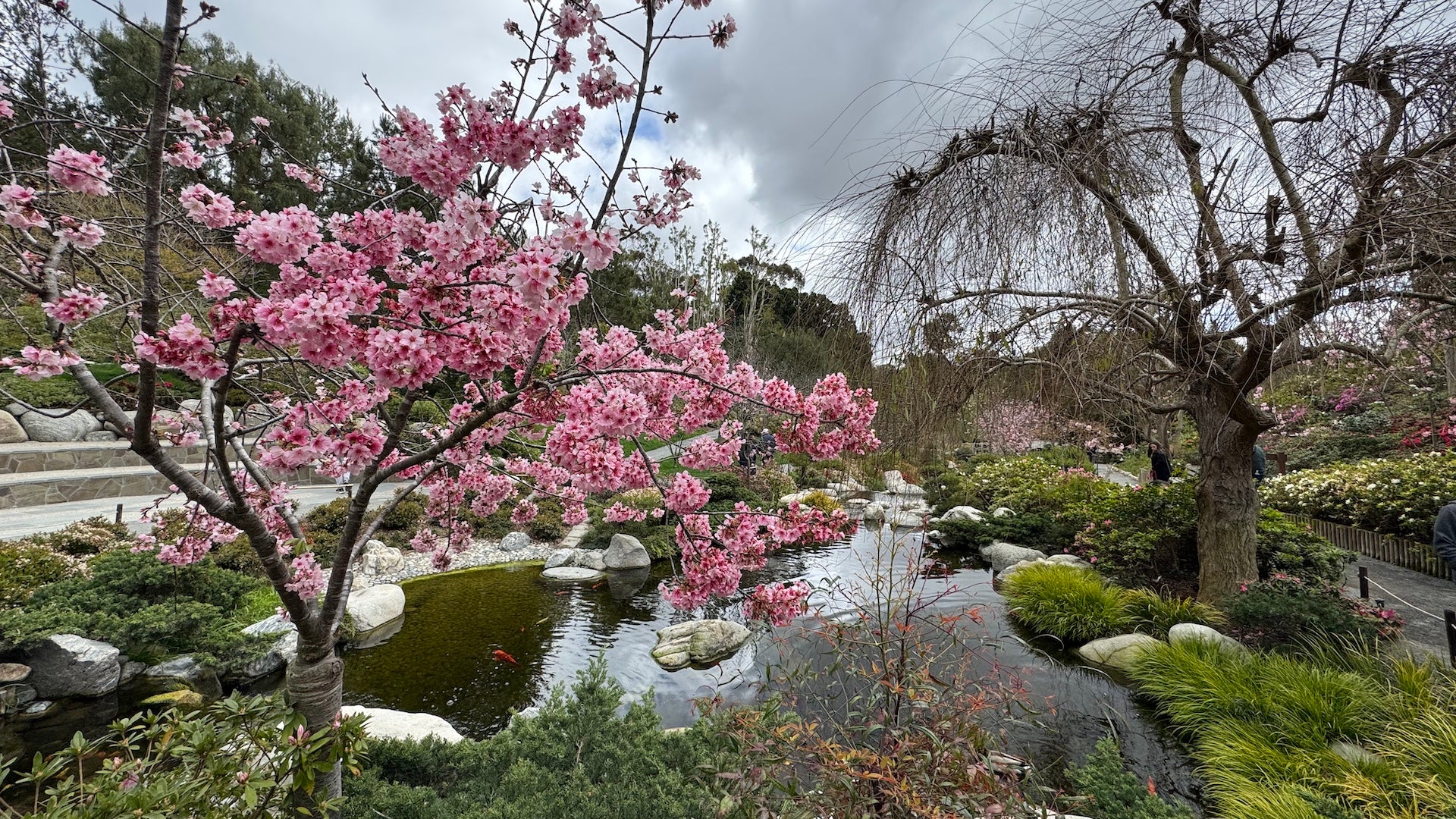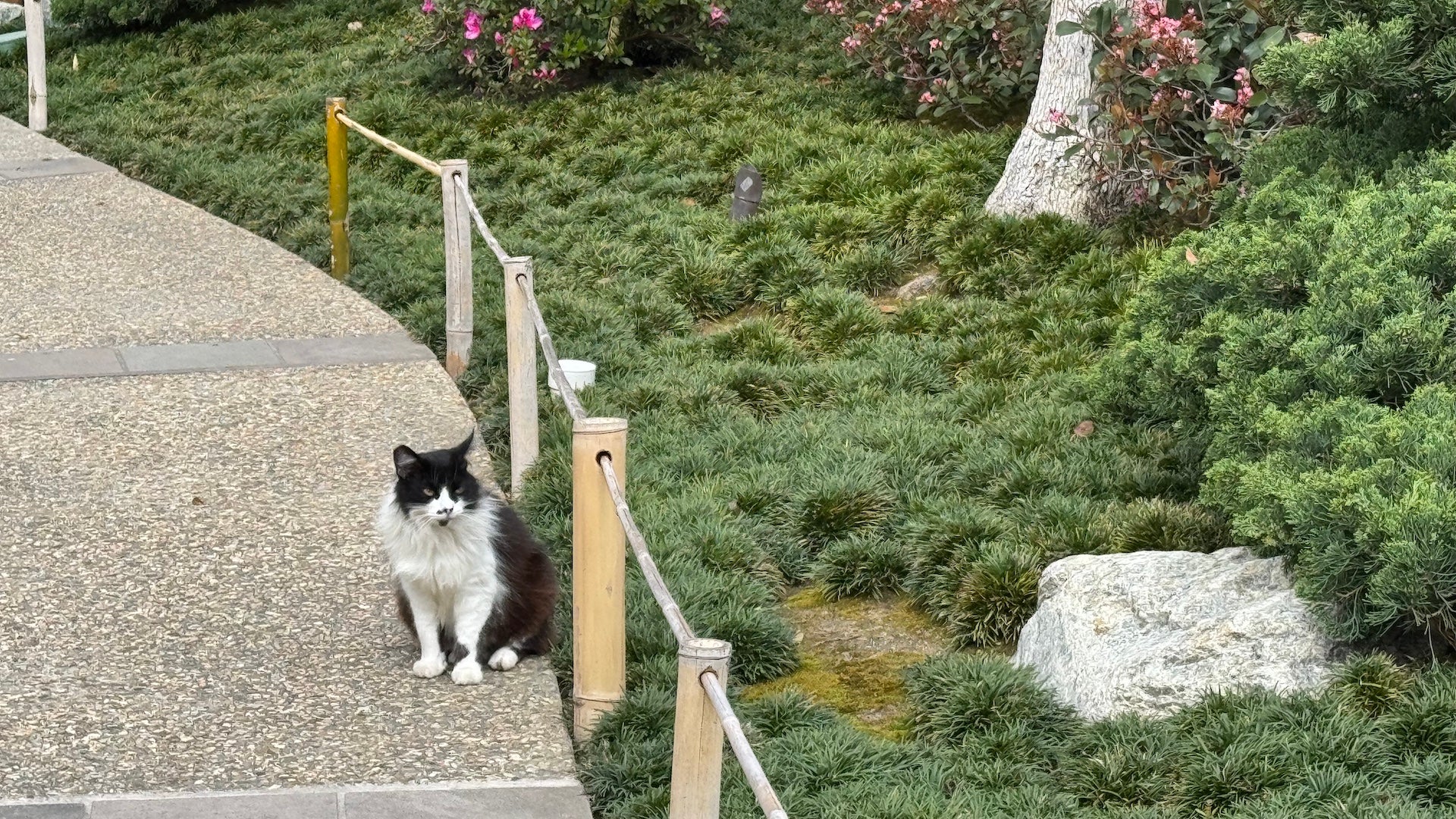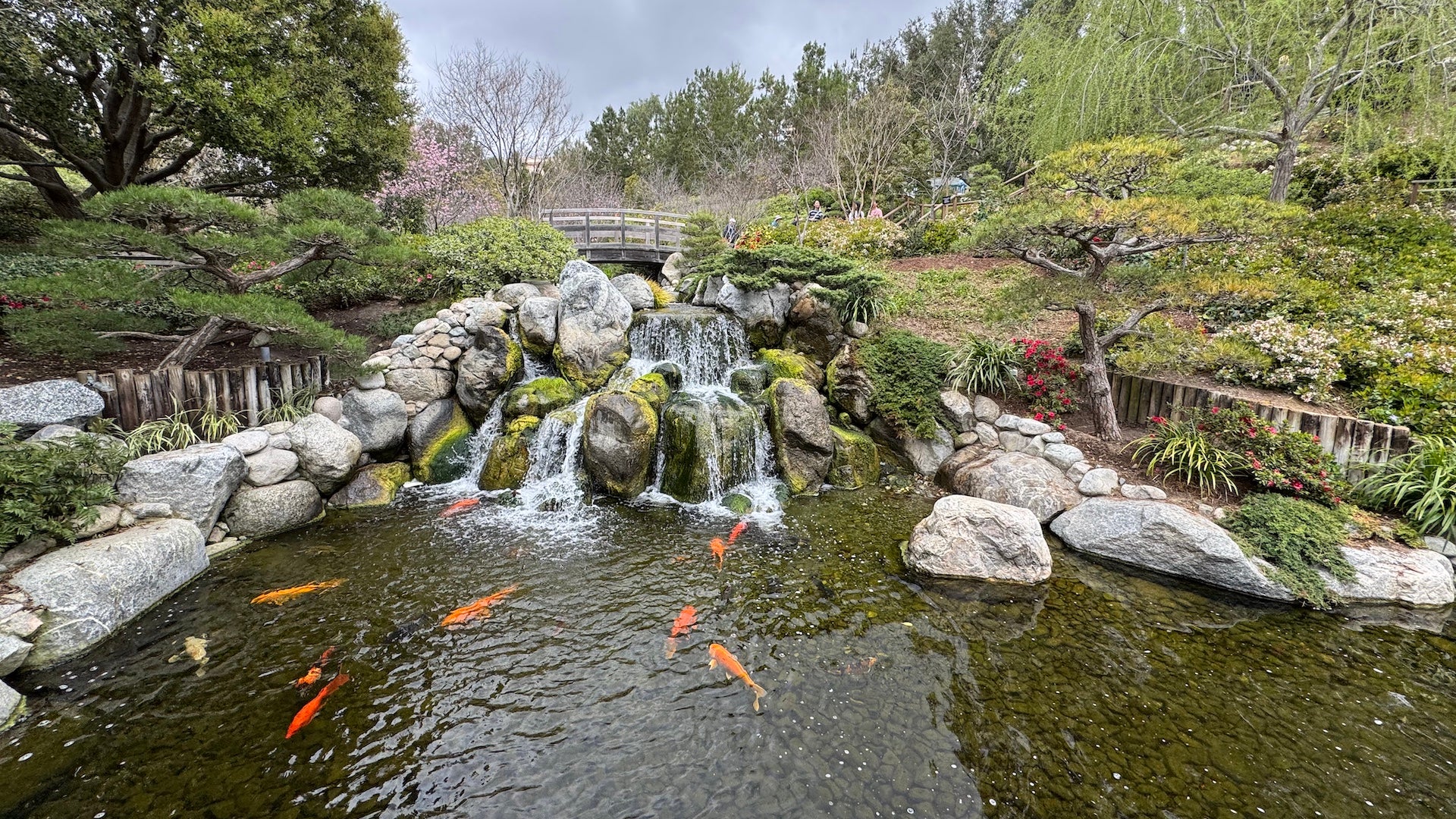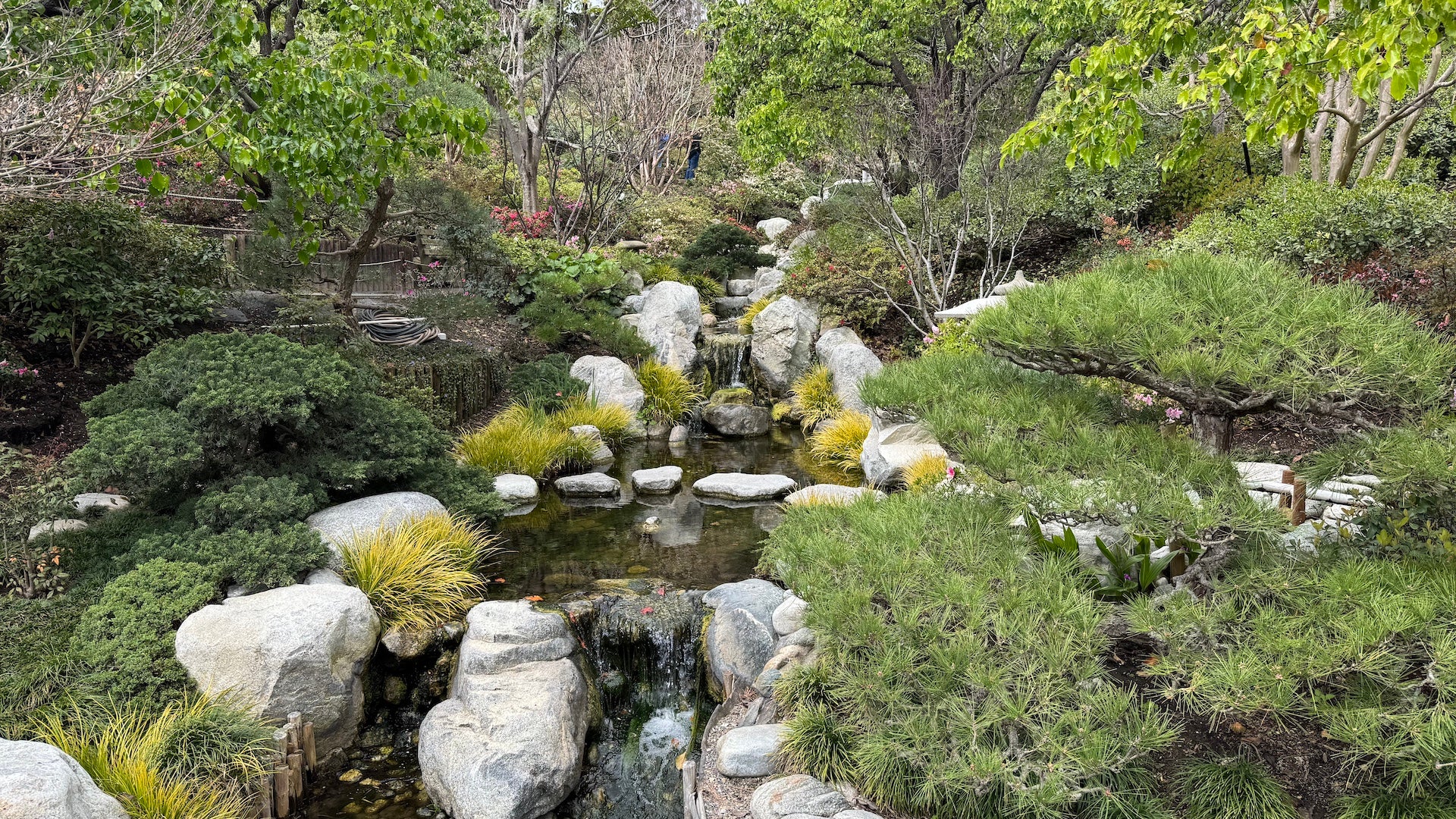Japanese Friendship Garden and Museum: Blossoms, Bonsai, and Bliss

We didn’t plan to have a spiritual awakening before lunch—but then again, we hadn’t planned on being greeted by a small, regal cat either. Perched near the entrance of the Japanese Friendship Garden & Museum (JFGM), this feline ambassador—rumored to be the unofficial guardian of tranquility—gives each visitor a slow blink of approval before they step into serenity.
We hadn’t planned on cherry blossoms, koi ponds, or one of the most peaceful strolls in all of San Diego, CA, either.
Tucked into the lush sprawl of Balboa Park, the Japanese Friendship Garden & Museum (JFGM) is part cultural landmark, part botanical love letter, and entirely worth your time.
On the kind of day that weather apps call “mild” but poets would describe as “divine,” we strolled under blooming cherry blossoms, caught koi side-eye from a sun-drenched pond, and immediately started romanticizing our own lives.
Cherry Blossoms: Nature’s Confetti
Timing, as they say, is everything. We were lucky enough to have accidentally planned our visit just as the cherry blossoms had burst into full bloom.
The garden looked like the answer to the question, “What if Violet Bridgerton hosted a picnic sponsored by Instagram aesthetics?”
Pink petals fell like they were being paid to, and for a solid three minutes, we were the diamonds of the season. All that was missing was a string quartet playing a dramatic Taylor Swift cover.
Kelsi: This place makes me want to write letters with a quill and pretend I have secrets.
Katherine: I need a fan to dramatically snap open every time I have a petty thought.
Design and Features: A Harmonious Blend
The layout? Absolute #gardengoals. Every turn felt like it had been blessed by a monk and styled by an interior designer with a bonsai obsession. We wandered along stone paths that practically demanded a slow, reflective walk—even though we had things to say and snacks to discuss.
The koi ponds were giving calm, unbothered, gentle-luxury energy. Like if meditation had gills. Watching them was like watching peace happen in real time. Slow. Unhurried. Very “I don’t rush, I attract.” Iconic.
The Inamori Pavilion was tucked elegantly into the landscape, all clean lines and peaceful shade—a place that practically whispered, “Stop checking your phone and just breathe.” Around us, every single detail—from the teeny, perfectly pruned bonsai to the subtle gurgle of water features—looked like it had been lovingly tweezed into place by a serenity-obsessed wizard.
Kelsi: This entire garden is a lesson in how to chill out with grace.
Katherine: It’s one of those times where you stop trying to capture the moment and actually live in it.
A Blossoming Friendship: The Garden’s Origins
The roots of the Japanese Friendship Garden trace back to 1915, during the Panama-California Exposition. Amidst the fanfare, a quaint Japanese tea house emerged as a symbol of cultural exchange.
For nearly three decades, this tea house served as a hub of cross-cultural camaraderie until its closure in the early 1940s. Fast forward to 1991, and the garden was reborn, blossoming into a 12-acre testament to the enduring friendship between San Diego and its sister city, Yokohama.
A Tale of Friendship: Mitoko and the USS Walke
Amidst the garden’s beauty lies a story that tugs at the heartstrings. In 1951, during the Korean War, the USS Walke suffered damage, leading its crew to seek repairs in Japan.
There, they met Mitoko, a spirited 14-year-old orphan whose optimism left an indelible mark on the sailors. Moved by her plight, the crew funded her education.
Decades later, in 1993, a heartfelt reunion took place at the Japanese Friendship Garden in San Diego, symbolizing the enduring bonds of compassion and cultural connection.
Cultural Immersion: More Than Just a Pretty Space
Beyond its visual allure, the Japanese Friendship Garden serves as a cultural hub. Throughout the year, it hosts festivals, exhibitions, and educational programs that delve into the rich tapestry of Japanese traditions.
Whether you’re partaking in a tea ceremony, marveling at a bonsai exhibit, or enjoying the rhythmic beats of a taiko drum performance, the garden offers a multifaceted experience that engages all the senses.
Practical Magic: Planning Your Visit
Located at 2215 Pan American Road E, San Diego, CA, the Japanese Friendship Garden is open daily, with hours varying seasonally.
Parking Like a Pro: The closest place to ditch your car without breaking a sweat? The Oregon Pavilion lot. It’s just a short (and scenic) walk to the Japanese Friendship Garden, and honestly, it’s a win for both convenience and your step count.
Best Time for Peak Bloom & Fewer People: If you’re chasing those perfect cherry blossom moments, plan your visit for late February to early March—but check the bloom tracker online because nature doesn’t follow our schedules. If you’re more into serenity than petals, try a weekday morning. The garden opens at 10 AM, and the earlier you go, the more likely you are to have those koi ponds (and your thoughts) to yourself.
How Long to Stay: You don’t need all day—but you’ll want more than just a quick pass-through. We’d say give yourself 90 minutes to two hours. Long enough to stroll every path, sit by the waterfall, and debate whether you could get away with whispering affirmations to bonsai trees (you can).
What to Bring (and What Not To): Bring sunscreen, a refillable water bottle, and something to journal or read if you’re in the mood to linger (which you will be). It’s the perfect setting to channel your inner quiet genius—just keep it analog.
- Outside food? Nope. Save the snacks for elsewhere in Balboa Park.
- Pets? They’re welcome in Balboa Park, but the Japanese Gardens have a no-paw policy.
- Scooters or bikes? Also, a no. This is a stroll-only zone.
- Art supplies? Unfortunately, no paints or drawing tools either.
- Strollers? Yes! Bring your little ones. The paths are stroller-friendly, peaceful, and blessedly nap-inducing.
Need a little guidance while you’re here?
Download the Japanese Friendship Garden app, which offers self-guided audio tours, a plant map, and info on exhibits, events, and programming.
Ticket Prices:
- $14 – General Admission
- $12 – Students, Seniors, Military
- Free – Kids 6 and under
Restrooms & Refill Stations: There are restrooms and water fountains at both the Event Plaza and the Inamori Pavilion—aka hydration and bathroom salvation without having to leave your Zen state.
Before you leave, don’t forget to stop by the gift shop, where you can pick up everything from delicate tea sets to quirky koi-themed socks—because who doesn’t need more fish-adorned footwear in their life?
Katherine: I came for the cherry blossoms, but I’m leaving with a newfound appreciation for koi fish and a pair of socks to prove it.
Kelsi: And a sense of serenity that’s hard to come by these days.
Final Thoughts: A Must-Visit Oasis
In a city brimming with attractions, the Japanese Friendship Garden & Museum stands out as a sanctuary of peace and cultural enrichment.
Whether you’re a history buff, a nature enthusiast, or simply in need of a picturesque backdrop for your next profile picture, this garden offers a little something for everyone.
So, grab your most Zen friend, channel your inner contemplative philosopher, and immerse yourself in this slice of tranquility nestled in the heart of San Diego.


